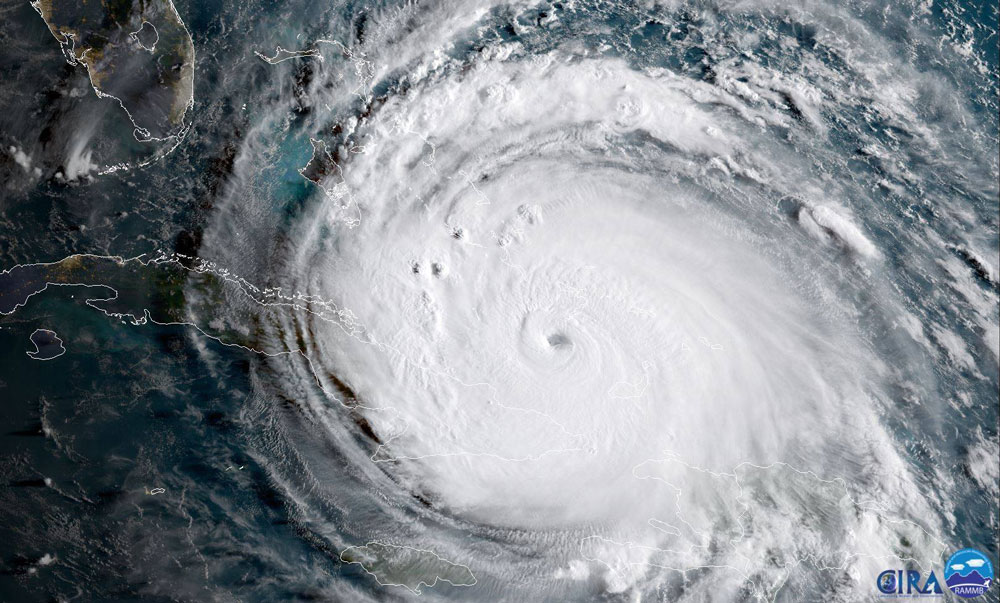This Is What It’s Like Flying a Drone in the Eye of a Hurricane
Posted on Categories Discover Magazine

Brian Emfinger is a lifelong storm chaser, and as a photojournalist and drone pilot for KATV in Little Rock, Arkansas, his work takes him places other people would flee.
He was in Rockport, Texas, when Harvey came onshore. He flew his drone after the eye passed overhead, gathering gripping shots of the aftermath across the region.
But as Emfinger geared up to chase Hurricane Irma into Florida, he knew he wanted to capture a drone perspective like no other. He wanted to fly his DJI Mavic Pro drone in the eye of the hurricane — a potential first.
Aerial video from inside eye of Hurricane Irma. Just minutes earlier 100mph wind gusts were damaging these homes SE of Naples @KATVToddYak pic.twitter.com/BMi7k8k2Wh
— Brian Emfinger (@brianemfinger) September 10, 2017
I caught him by phone as he waited for a gas station to open its pumps outside Tallahassee.
“The plan from before I left Arkansas was to try to get in the eye and put the drone up,” Emfinger says. “I thought that would be really cool.”
Battling Wind and Rain
Most drone pilots don’t fly in winds over 15 mph as avoiding trees is tough enough in normal conditions. And even pilots who tempt high winds would never consider flying in rain—electronics and water don’t mix.
But Emfinger is obviously not most pilots. He was flying as heavy rain bands approached. Instead of some beast of a drone — an Inspire 2, perhaps — his quad of choice is the tiny Mavic Pro.
“I put it up right before the hurricane core came over yesterday, and winds were gusting to 50 mph,” Emfinger says.
If he felt a gust coming, he’d fly closer to the ground where the winds dropped off. But there was one particular gust where he had to fly around a building for cover. And at one point, he ended up with the drone out 10 feet over the ocean battling to fly it home. And it’s certainly not listed in the manufacturer’s specs, but Emfinger says the Mavic is surprisingly water resistant.
“I have flown it in ever increasingly worse conditions,” he says. “I started flying it in light rain without worries. Then I started flying it in moderate rain without worry. I’ve gotten to the point now where I’ll even fly it — at least for a short time — in heavy rains.”
Aerial video of some damage from yesterday inside the eye of Hurricane Irma at Bonita Springs, FL. @KATVToddYak pic.twitter.com/FjcudcLiw2
— Brian Emfinger (@brianemfinger) September 11, 2017
He does make sure his camera has its protective bubble on. You can see the proof in some of his videos from Hurricane Irma, where water spots trickling down the drone camera. His trick: He tries not to actually fly around. He puts it straight up in the air and uses the drone as a skycam. And afterward, he leaves it on in the car while the heater runs.
The Eye Arrives
As he’d planned, Emfinger sheltered from the eyewall in his car next to a sturdy structure and a concrete wall. Many storm chasers ride out hurricanes in parking garages.
“The winds were very, very severe,” he says. “There was debris flying around — pieces of roofing that were literally landing next to me.”
Winds on either side of Irma’s eye were gusting from 50 to 100 mph at his location near Marco Island. And with the eye approaching, he had the Mavic on his dash ready to go.
Heavy rain bands from Irma as seen from Naples, FL @KATVToddYak pic.twitter.com/9lzDZCjn2q
— Brian Emfinger (@brianemfinger) September 9, 2017
As it arrived, the sun came out for a few moments and the winds died off. He launched as soon as it was clear. Unbeknownst to him, there was a mobile home park near where he’d taken shelter. And his drone video showed it had sustained severe damage.
“To be in an area where it was so calm, no wind, just a slight drizzle, it was pretty surreal,” he says. “Even at the time I was like ‘this is pretty crazy.’”
Emfinger says he’s never heard of someone flying a drone in the eye of a hurricane before. NASA flew its plane-sized Global Hawk into a hurricane, but small quadcopters have made enormous technological leaps in just the last year or two, so there hasn’t been much opportunity before.
“(I) wouldn’t be surprised at all if I was the first,” Emfinger says.